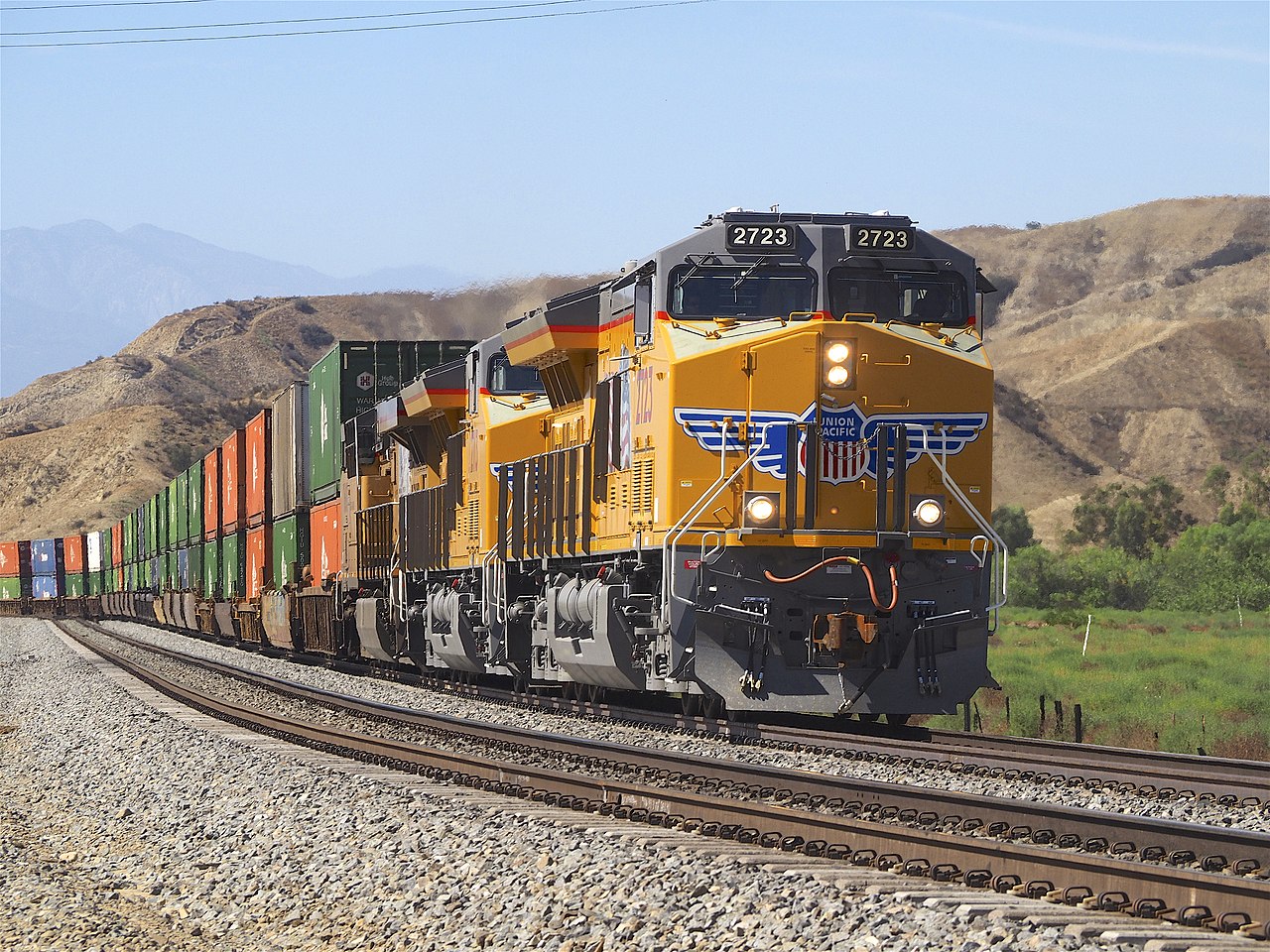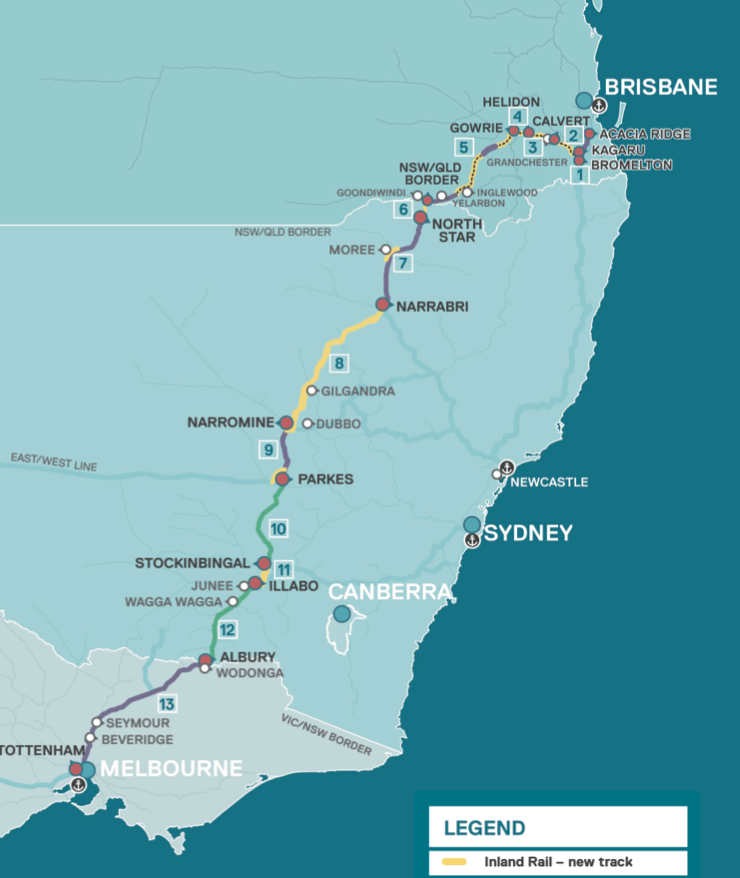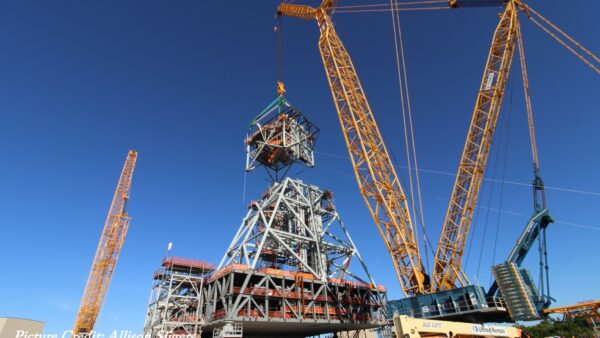
Inland Rail is a new 1,700km railway currently costed at A$14.5bn that will run from Brisbane to Melbourne on upgraded or brand new tracks, bypassing congested Sydney altogether.
It is the Australian government’s answer to the challenge of ever-rising freight movements clogging existing road and rail networks on the country’s fast-growing eastern seaboard.
Because it will allow heavier, longer trains that stretch out to 1.8km, and trains that are double-stacked because they don’t have to clear overhead urban wiring, Inland Rail is seen as a decisive brake on the relentless proliferation of trucks.
Now, some 74% of freight is moved by truck and just 26% by rail. According to the 2015 business case produced by the Australian Rail Track Corporation (ARTC), Inland Rail would nearly reverse that ratio in 30 years, with rail moving 62% of freight and roads’ share shrinking to 38%, even though total freight volumes would have risen steeply.
A single Inland Rail train would take 108 B-double trucks – those hauling two trailers – off the road, cutting fuel consumption, congestion, greenhouse gas emissions, crashes and road wear-and-tear.

“This sustainable solution will slash Australia’s fuel bill, moving our consumer goods and exports with as little as one-third of the fuel that it would take to move the load on our highways,” said John Fullerton, the corporation’s chief executive at the time.
The scheme creates a new rail network out of existing infrastructure. To make the 1,700km link, some 1,100km of existing track will be upgraded, and 600km of new track will be built through regional Victoria, New South Wales and Queensland.
ARTC believes it can be built over 10 years. As often happens with very big infrastructure schemes, the estimated cost of building Inland Rail has risen from around A$10bn in 2015 to A$14.5bn in December 2020.
Big-hitting consortia have now begun winning main sections of the new railway (see Further reading).
Further reading:






